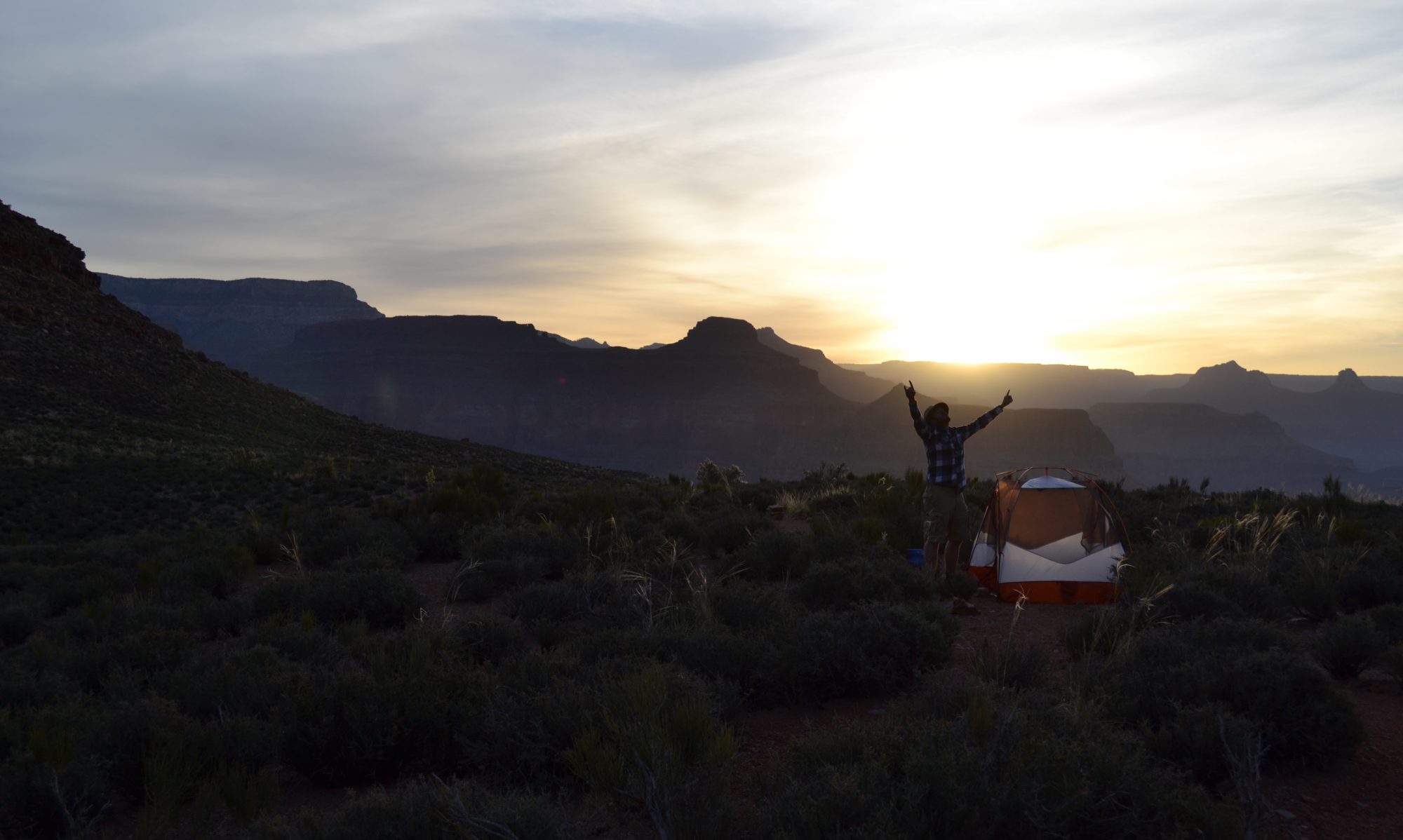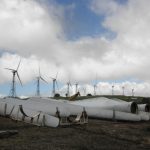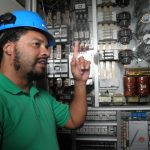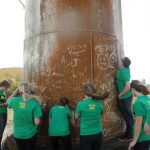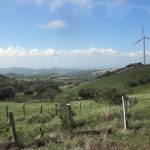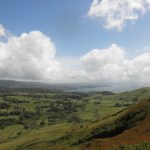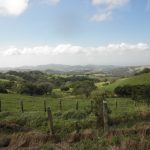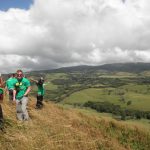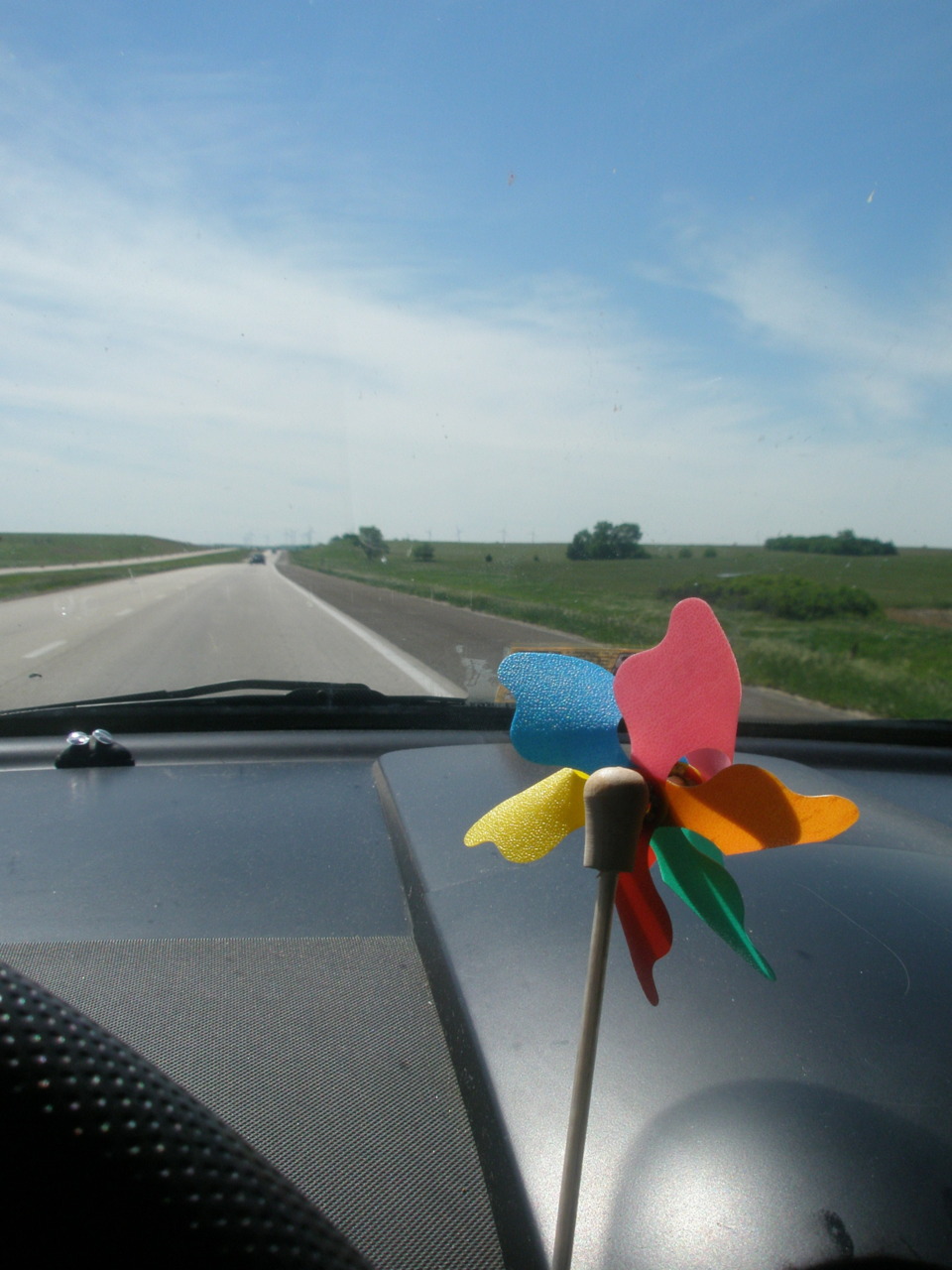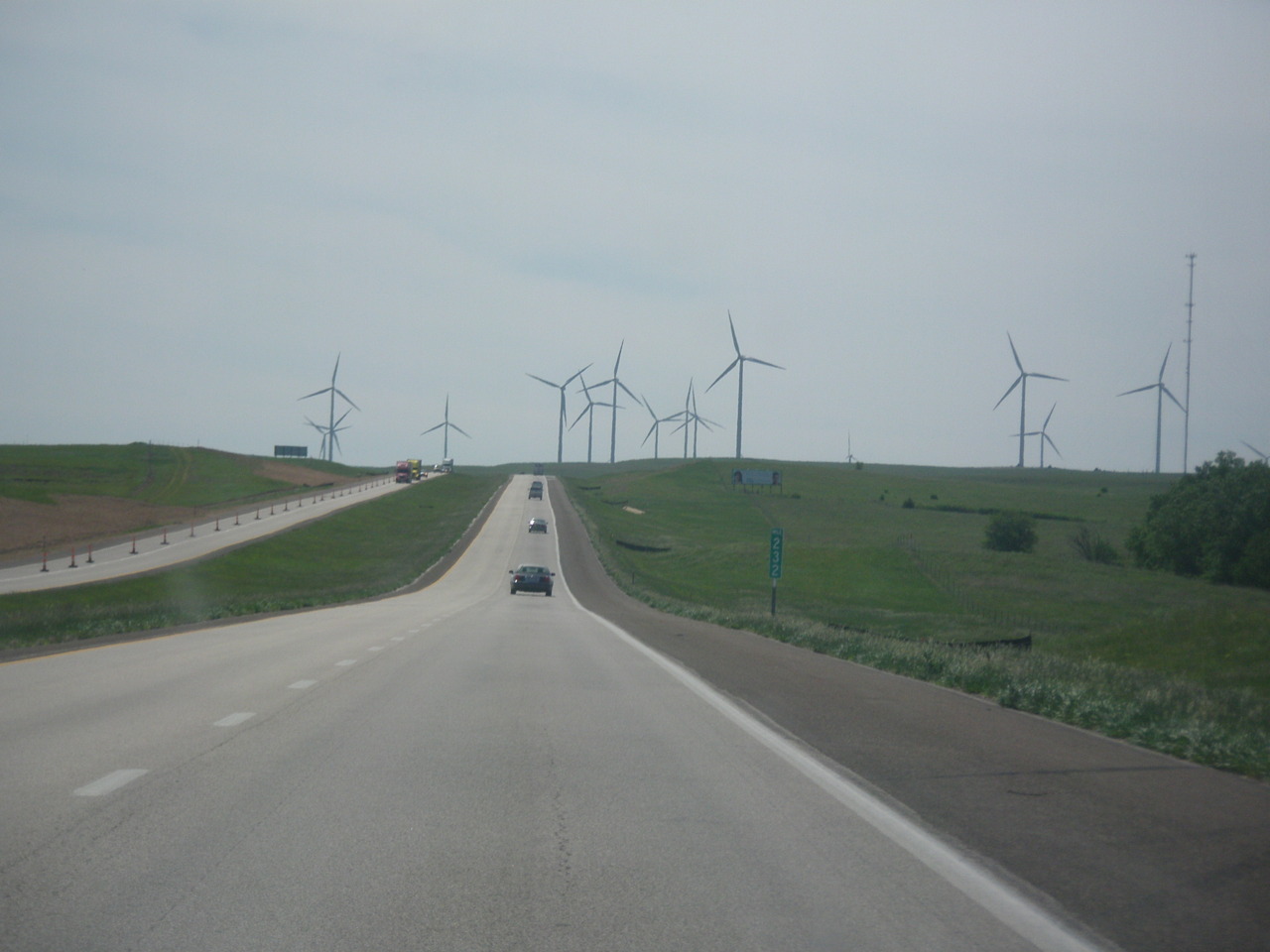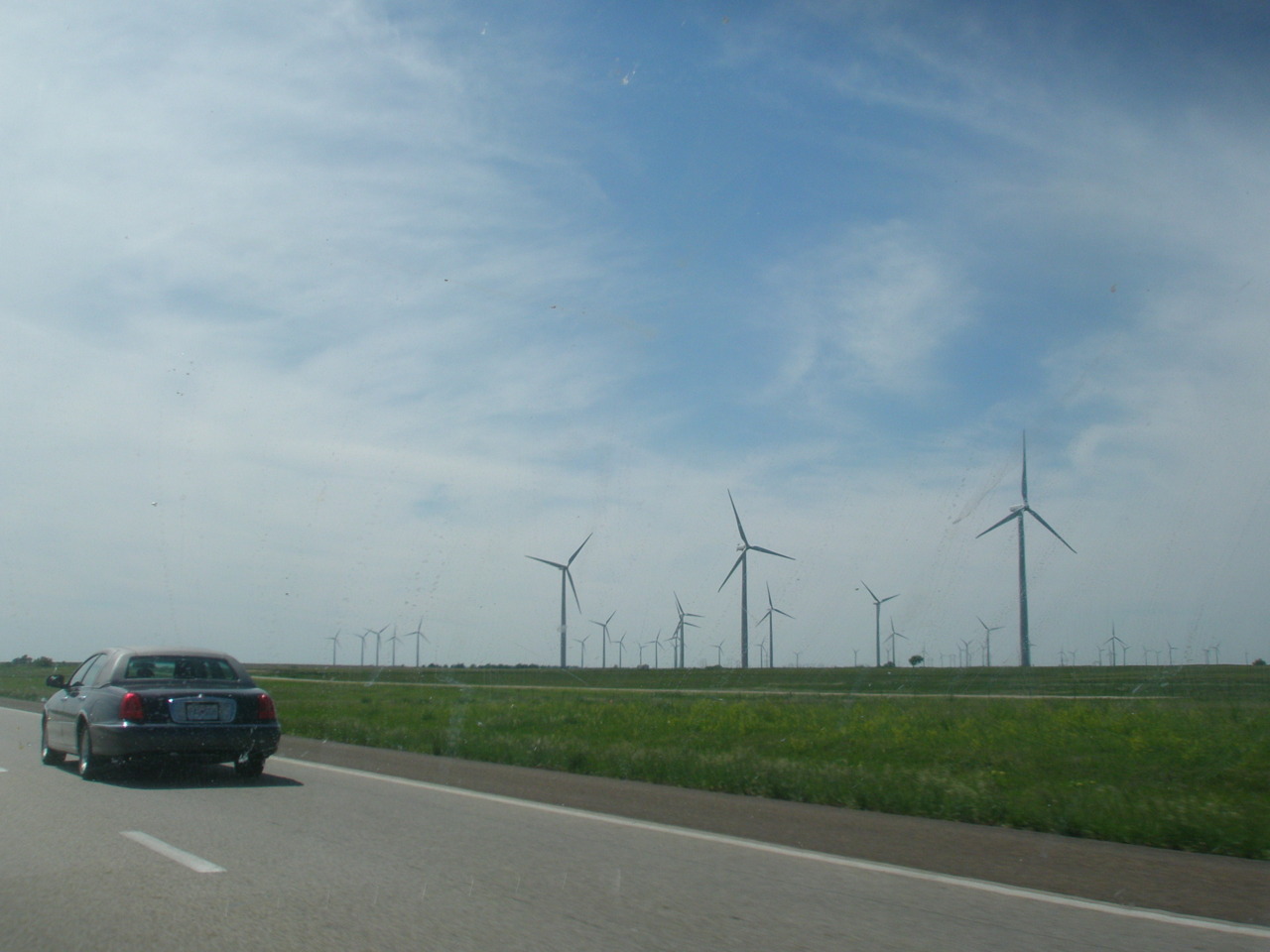5/29/2011
Hot Springs, South Dakota to Cody, Wyoming
I hadn’t planned for rain. My tent was old and though we tried to waterproof it since the last fiasco when I hiked the Appalachian Trail with Rachel Wallace, but apparently it hadn’t quite done the trick. I didn’t wake up to thunder or lightening or the sound of rain pelting the side of the tent, I woke up to the torture of water droplets slowly pelting my face from above. Everywhere else my sleeping bag had reliably kept me warm and safe, but now as I looked around, I found all of my scattered maps soaked, my pillow the same consistency as a soaked sponge, and my book twice as thick as it was when I had fallen asleep beside it. Thank god my computer had been out of battery as it was more safely tucked away in my book bag in the center of the tent. I folded and covered everything as best I could by the light of my tiny LED flashlight, but alas it was 4a.m. and I was not moving. The inside of my sleeping bag and I were still dry and warm and so I quickly fell back asleep. I would deal with this shit in the real morning. Several hours later with the rain still not letting up, water finally seeped into my sleeping bag’s one weakness: the zipper. My feet were right at the edge of the tent and now thoroughly soaked. Fine universe, I’m awake.
Accustomed to the warm temperatures of summer, I was still wearing a short-sleeved t-shirt, capri jeans, and (now soaked) flip-flops from the previous day. I tried not to shiver as I threw everything into the car. I lifted the stakes to the useless rain tarp and stuffed it haphazardly into the bag. Immediately the wind picked up the rest of the tent and tossed it against the nearby metal bench. I tried to step in, but I could no longer feel my fingers and was no match for the 1-2 punch of this wind and rain. A crack rang out across the camp (at least to my ears) and the apex of the tent now featured a splayed wooden rod. And thus the quite eventful life of this tent came to a close. I still sat there and painfully continued to take apart the tent so that I could shove it into it’s bag. Finally finished, I threw it into the back of the bug and then just sat in the front seat, refusing to move until the heat came on and the feeling in my fingers returned. I glanced at the temperature reading my car so kindly provides: 41 degrees. Great.
Today is still five-stops-in-one-day day: Wind Cave National Park, jewel cave, Crazy horse monument, Mt. Rushmore, and Badlands National Park. They’re all *kind* of in a close South Dakota/Wyoming cluster and I’m running out of time.
The campsite didn’t have running water, so I drove to the visitor’s center and hauled in a bag of clean, dry clothes. I changed quickly, but waited until everyone was gone from the bathroom to wash my face and brush my teeth so I didn’t look like the hobo I actually was. Just at the finish line, a park ranger walks in and attempts to hold a conversation with me. I quickly spit out my toothpaste and continue the conversation, but alas I am caught. Yes world, I am living out of my car. She thought it was hilarious, said she’d seen worse, and we walked out together. She signed me up for the official wind cave tour and soon I was in one of my favorite places: a dark, claustrophic, cave, situated out of the wind and rain (finally). The cave itself is incredibly unusual. Instead of being formed by running water, it was essentially a big underwater lake. The stagnant water allowed for the limestone that was eroded away to form a hard calcite shell within the cracks of the remaining limestone. Thus, when the water just kind of drained out of the cave, these square calcite deposits remained. The technical term for these is boxwork and this cave alone holds the majority of the world’s specimens on top of being one of the largest caves in the world. The lack of the normal stalactites and stalagmites and other running water formations made this cave a little boring, and my co-tourists were a little annoying with their constant “why would anyone willingly explore this place?” ( – umm cause its really cool guys).
I stamped my book and left for the next stop on this five-stops then lots of driving day. Driving to the next destination, I suddenly got cell service for a few precious moments. During which I listened to a voicemail from Lydia, bemoaning that I had left my laptop charger at her apartment. Ugh. Great. Oh well, it would have to be shipped to me in Idaho. In the mean time, without my mapquest source, (soaked) paper maps will have to guide me the rest of the way.
Jewel cave is apparently much prettier than wind cave. Obviously from the title, it’s a little more showy, more sparkly, and therefore more tourists were attracted to it on this rainy day – leaving zero tickets left when I arrived. I stamped my passport anyways and moved on to the next stop.
The Crazy Horse monument is certainly interesting in theory. Struck down early in life for his cause, he is supposed to be depicted atop a horse, windswept hair atop both heads, with Crazyhorse pointing out over his lands, in a monument that would be bigger than Mt. Rushmore. But the carving began in 1948 and you can still only see Crazy Horse’s face. On top of this the intro documentary thing had a sort of political rant on not accepting government money. And finally on top of this, the history of the mountain carvers is a little strange. The original carver, Ziolkowski (who also worked on Mt. Rushmore), died in the 1980s, but his work has continued through his wife and ten children’s efforts. That’s right ten children: five girls and five boys. The boys work on the mountain and the girls cook and run the gift shop. I don’t know why I found this so…strange…but I didn’t like it. Probably related to the political rants, slow progress, and very defined gender roles – meh. The museum itself was a little showy but very fascinating and the gift shop was filled with interesting things that I couldn’t possibly afford. The rain made it a little hazy, but I snapped my picture of this unfinished rock slab.
The rain maintained its constant drizzle as I headed further up the side of the mountain. As I climbed higher, a hazy fog set in, greatly reducing the visibility. For some idiotic reason, I did not pay attention to this, as I could still see the road and that was all I needed. I pay the admission fee for Mt Rushmore, march up to the observation deck, and then laugh awkwardly loud. It wasn’t there. There was a plaque explaining details of everything that should be in front of me, but there was just fog. I couldn’t even see an outline. I went back to the gift shop to buy some postcards to pretend like I had seen it, and struck up a conversation with the retired navy guy ringing me up. Apparently, I should join the military. I smiled, shrugged my shoulders, thanked him for his service, and listened pleasantly to another round of grandchildren stories. When he got more customers, I politely left, stamped my passport, watched a documentary, and followed a ranger on a hike to get a closer view of the monument, just in case. The fog did clear slightly, but only enough for me to see the outline of Washington’s head. The small children running about kept staring at the adults, wondering why they kept trying to see a big rock that wasn’t even visible. It’s kind of a shame I didn’t get to fully see it, but the ticket is good for the entire year so maybe I’ll make it back – but probably not, oh well.
The final stop of the day was the badlands of South Dakota. The badlands are only an hour from the Mt. Rushmore area, but on the nice local map they pass out to everyone, they’re on two separate squares. With a little maneuvering I found a route that had the least mileage, brought me through the most area of the badlands, and avoided the highways. About halfway along this route, the paved road suddenly ended and a dirt/gravel road took its place. I was not aware of this upcoming shift and almost lost complete control of the car, slamming on the breaks and twisting from side to side as if I was driving on ice. I regained control and came to a stop in the middle of the road, heart pounding, making sure I still had all my limbs. Apparently “avoiding highways” is not the fun side road of the east coast but instead a freaking dirt road which shouldn’t even count as real road. But I couldn’t turn around now, I was already behind schedule and halfway there, so I buckled up (figuratively of course) and cautiously continued driving. The nightmare of getting stuck in the mud with no cell service pervaded my mind, but I brushed it away and continued on, rolling up the windows as the tires constantly splashed grime at my sides. The thrill of it all was kind of exciting and I couldn’t wait to see the badass dirt on the side of my car proclaiming that my bug – not a jeep or truck or SUV – had just off-roaded. I didn’t run into any people (though can you believe there were mail boxes on this non-existent road?) nor Buffalo (ugh!), but the scenery was absolutely beautiful. An hour or so later I returned to a paved road and the visitor’s center. It was 6:15 p.m. and the sun was beginning to set, so I quickly caught the last documentary showing, stamped my passport, admired Buffalo postcards, breathed in the air and sights around me, and headed back to the road.
There were two things now weighing on my mind. I no longer had a tent which meant I needed to find a hostel or hotel. Hostels were out of the question as I had no computer to look one up nor were there really any cities that would have had one anyways. So a hotel. Most hotels require that you be 21. I am 20. But maybe I talk my way (desperately pleading and looking pathetic) into one. The second thing was that I was running out of time. I had two days to get to Boise and there were numerous National Parks along the way that I wanted to stop at, including Yellowstone and Craters of the Moon. So, no longer inhibited by the need to set up camp during light, I decided I would drive toward Yellowstone for as long as I could stay awake and then get a hotel room.
For some reason most of the places I stopped at today offered free coffee. Now I normally don’t like coffee at all, but this was both free and warm, so I probably drank maybe 6 cups throughout the day. In any event, I was wired, fresh off my dirt road success, and ready for another challenge. So I started driving. The rain continued throughout, but the fog came and went. Just when I was about to pull off the highway because I literally couldn’t see from this fog, it would clear and I would think to myself – ok, I can go for one more town, it’s just so close. I kept a constant watch on the temperature outside to make sure the rain didn’t turn to ice, but it held at around 42 degrees. But then I took it too far. The next town that looked so close on the map was actually on the other side of a mountain. The road became smaller (though still paved, thank god) and started winding back and forth up the side of this thing, like I was on the polar express. I tried to stay calm and imagine dancing men pouring me hot chocolate, but then my temperature indicator dropped to 32 degrees and the rain turned into sleet and then to snow. I have driven through snow once before in my life and that was in a mini-van in the middle of the day in a city. But I couldn’t turn around; I must be almost there, right? Nope. It was now dark, about 2am, no other humans were on the road, and the snow in my high beams made it look like I was going warp speed on the Enterprise, though I was crawling at 20 miles an hour. Though I couldn’t really see, the snow on either bank of the road rose to several feet and the pines, as tall as skyscrapers and as dense as sardines, looked like those fake, bright white trees in A Charlie Brown Christmas. WHY DO THESE MAPS KEEP SENDING ME DOWN CRAZY ROADS? A little scared, I was more focused on overcoming this mountain, and several tense hours later I emerged from the ski resort and snowmobile crossing areas intact. It was now 4 a.m. and I was exhausted, but the first town I came across had neither an open hotel nor some bright-lit convenient store where I could safely rest in the parking lot. So I traveled on. I finally arrived in Cody, Wyoming where there were no open hotels, but there was a 24/7 McDonalds. I parked in front of the drive-through, pretending like someone would be able to keep track of me in such a high traffic area and fell asleep in my reclined front seat.

